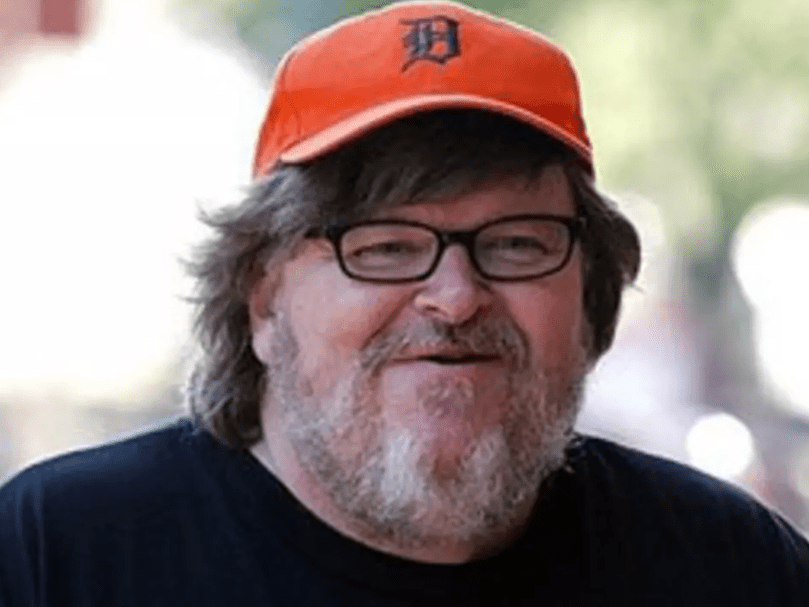By Mark Langabeer, Newton Abbot Labour Member.
This excellent documentary, written and produced by Michael Moore, is as relevant today as it was when first filmed nearly twenty years ago. Although it sought to support gun controls in the USA, the documentary provided explanations that went beyond the problem of high gun ownership.
In the USA, citizens have a constitutional right to bear arms. Originally progressive, in that it was necessary to defeat British colonial rule, it is a law that reactionary in character, because it has been a means of committing genocide on the Native Americans and enslaving the Black population. Gun ownership was always the preserve of the White population, and, according to Moore, the National Rifle Association emerged from the Ku Klux Klan.
Evidence that there is a link between the level of gun ownership and homicides is overwhelming. This is also the case with suicides. The US has 5% of the world’s population but 45% of the world’s privately held firearms. The US has significantly higher firearm homicides than anywhere else. There is also evidence that those states which have the most guns, have the highest homicide rates. Yet it is a myth that the US suffers more crime than other western countries.
Gun lovers’ paradise
Moore pokes fun at a US bank that advertises a free gun if you open an account with them. Is this wise, he asks, giving out guns at the branch of a bank? Born and raised in Michigan, Moore described that state as a ‘gun lovers’ paradise’. He interviewed a group who were members of the ‘Michigan Militia’, who became notorious in 1995when two members of this group, Timothy McVeigh and Terry Nichols, blew up a federal building, killing 168 people. Moore interviewed the brother of Nichols, who described McVeigh as a ‘nice guy’ and said that it was his duty to stop ‘radicals’. Moore noted that in Utah, Oklahoma, state law requires you to possess a gun.
The film is named from the fact that Moore turns a lot of attention in the film to the random shooting in 1999 at the Columbine High School in Littleton, Denver, which left 12 pupils and one teacher dead. The city is also home to a major weapons manufacturer, Lockheed. Many of the 5,000 staff who worked there were from Littleton and were traumatised by the events.
Many theories were given as to why two former pupils, who had gone ten-pin bowling that morning, decided to randomly shoot children and turn the guns on themselves afterwards. These range from violent video games, family break-ups, unemployment and even the music of Marilyn Manson! Moore suggests that we will never know the real reason for this attack. But what did follow was a fear of teenage children and many school students were expelled for minor breaches of school rules. It is little compensation to bereaved parents in that city for Lockheed to have later donated $100,000 for ‘anger management’ courses for high school students in Denver.
Fear of crime
Fear for personal safety generally reached new heights in the USA after 9/11 attacks. Wal-Mart reported a 70% increase in gun sales afterwards, as well as a 140% increase in ammunition sales. Gun sales are driven by a fear, not necessarily rational, of crime and a perceived threat to personal safety. There is no end of TV coverage that is given to crime and shootings. Yet Moore makes the point that in Los Angeles, pollution, including street-level pollution from cars, is actually a bigger risk to health than crime, but it is rarely, if ever, reported.
He points out that widespread gun ownership isn’t the only factor in gun crime. He visited Windsor, a town in Ontario, Canada, a country where over 7 million have guns but which has only a fraction of number of deaths from guns, as compared to the USA. It was even claimed that most Canadians in Windsor don’t lock their doors. Moore noted that in the US, most Americans had not one but three locks on their front doors. When he put this theory to the test he discovered that it was true. A spokesperson for Windsor said that the health and welfare system in Canada were factors in the difference between the US and Canada, in other words, Canadians have more reason to feel secure in their daily lives.
This was born out in Flint, Michigan, where a six year old child shot and killed another six year old. The media never covered the fact that this was an area blighted with poverty, where 80% of the children who attended their school were living below the poverty line. The mother of the child was on the welfare-to-work programme, involving a one-and-a-half-hour bus journey to work two different jobs. She was still unable to make ends meet from her two wages and she faced eviction. Her brother was looking after her little son who took his gun without his knowledge.
The reaction of the NRA to events like this, as with Columbine killings, was to hold rallies in support of gun ownership, showing their indifference to the families who had lost loved ones. You are left thinking, as one person says in the film, that there is an undercurrent of hatred and racism among many of the people around the NRA.

Repeating the myths
Moore decides in the film that it was time to meet the then President of the NRA, Charlton Heston, the famous Hollywood actor. Heston agreed to be interviewed but then cut it short when he was pressed on the issue of gun control and was asked to make an apology to the families in Columbine and Flint. Heston merely repeats the myth that the US is more violent than other countries and that it was connected to ethnicity. He admitted that he had never been a victim of violent crime and simply asserted his right to hold loaded guns on his sumptuous estate. Moore left the mansion, leaving a picture of the six-year-old at the door of Heston’s home.
This excellent documentary, recently recorded on Sky documentaries, remains as relevant today as it was in 2002 when it was made. Fundamentally, nothing has changed. It is one of the fault lines within American Society. Eradicating guns from private homes is essential to reduce the regular mass shootings. However, there are many a further social dimensions to this issue, which Moore highlights or at least hints at, but without drawing the necessary conclusions.
Following the assault on Capitol Hill, many commentators have drawn the conclusion that the old two-party system is over. They are referring to the split in the Republican Party, but this could also apply to the Democrats, regarded by Moore and others as the ‘lesser of two evils’. The Democrats support limited gun control but root and branch changes can only be established when the trade unions and socialist groups forge an independent party of labour that challenges a system that creates inequality, poverty and gun-related homicides.



